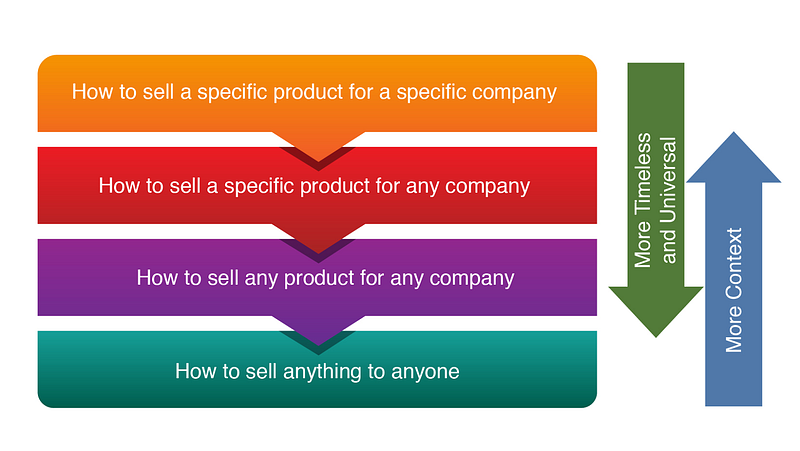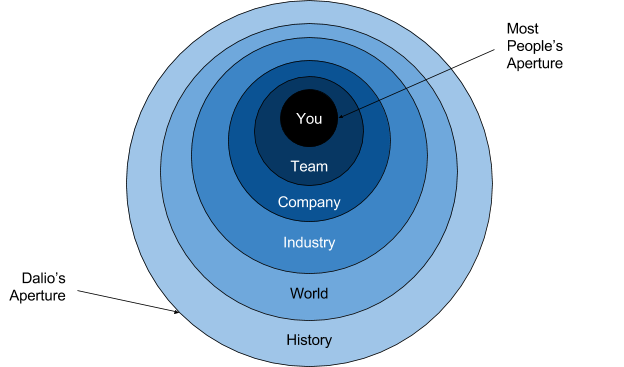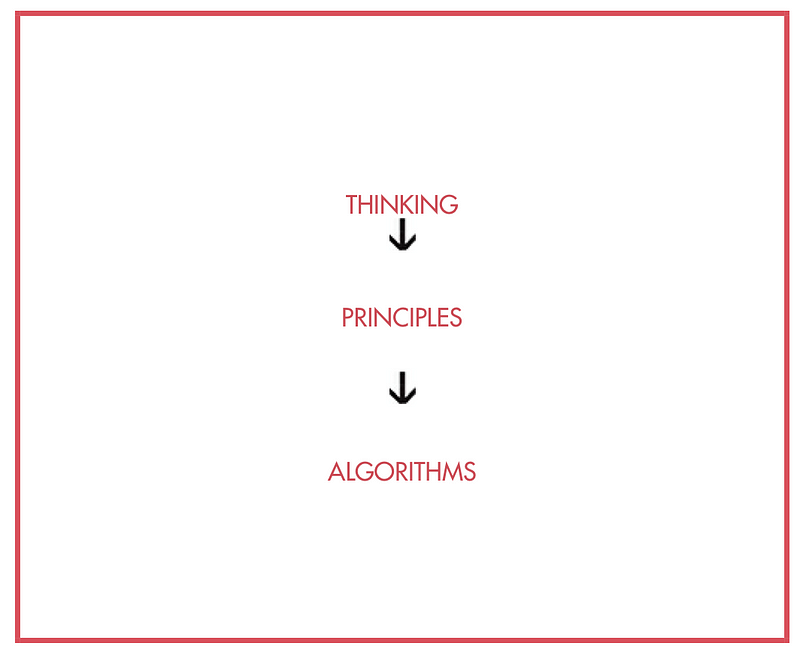Self-Made Billionaire: There Are Three Levels Of Reality, And Most People Are Stuck In Level One, But They Have No Idea
The brutal truth is that most people aren’t even aware of Level 2 or 3
One commonality of great thinkers, CEOs, and entrepreneurs throughout history is that they see reality on a deeper level. This helps them figuratively play chess while everyone else plays checkers.
This realization slowly came to me as I spent thousands of hours over the last few years reading, watching, and listening to everything from many of history’s wisest business leaders, from Charlie Munger, Elon Musk, Steve Jobs, Warren Buffett, and Jeff Bezos to Thomas Edison and Benjamin Franklin (all of whom I have written about).
Over and over, I thought I understood their words, and then later, when I revisited them, I realized there was a whole other layer I had missed. The experience was like looking at this image below, seeing only one thing and then realizing it is both a picture of a duck and a bunny.
See it?

This all brings me to self-made billionaire, entrepreneur, investor, and polymath Ray Dalio. Dalio is the founder of Bridgewater Associates, the largest hedge fund in the world, and his approach to and results from uncovering and using deep principles and mental models is unparalleled. Over the last 40 years, Dalio has meticulously identified and stress-tested a set of universal, success principles, and then created detailed step-by-step systems that his 1,500-person team uses to make management and investment decisions. This year, he effectively open-sourced everything with the release of his book, Principles: Life and Work.
This chart below from Dalio’s book is like the duck/bunny image. On one level, it’s a simple chart like any other chart. On another level, it’s profound and speaks to the three levels of reality that Dalio sees.
Source: Principles: Life and Work by Ray Dalio
Understanding these three levels of reality is critical because the better you build a map of how reality works, and the more you’re open to improving that map, the more successful you’ll be.

Let’s dive into Dalio’s three levels of reality…
Reality Level 1: Getting Stuff Done
Most people operate in this realm. The output of a good sales call is a closed sale. The outcome of a good meeting is the resolution of a specific problem. Conversely, a bad sales call is one that doesn’t result in a new customer. A bad meeting is one that decides nothing.
This level of reality is essentially about getting stuff done: creating a to-do list from most important to least important and then kicking butt right on down the list. Dalio calls this layer of reality the blizzard because lots of things are constantly coming at you from different directions, and it’s hard to get clarity on what really matters.
Dalio’s book is not written on this level. Most books are.
Reality Level 2: Principles
To people like Dalio, the value of an activity isn’t just its immediate result, but also the underlying principles at play. The principles you learn in any situation are often more valuable than the immediate result, because you can apply them for the rest of your life across all areas to make better decisions.
For example, let’s say you’re a salesperson. At Level 2, each sales call is an opportunity to learn about related principles on multiple levels:

As you move down toward fundamental mental models of what selling is and how it works, you gets closer to principles that are more timeless and universal.
Once you reach the “timeless and universal” level, you can apply a principle or mental model to exponentially more situations. And this is the key here. Once you reach an understanding of a mental model, you have a tool that can apply in many situations now and in the future to help you be more efficient, get more done, make better decisions, have better relationships, become more successful, and become more impactful.
Let’s take Stephen Covey’s fundamental principle of ‘Seek first to understand and then to be understood’ as an example. This principle can help you sell a product, but it can also help you be a better parent, have a happier marriage, enjoy deeper friendships, and get along with people of different cultures, faiths, and political backgrounds. If you’re interested in learning more about the value of fundamental principles and mental models, I wrote about it in How To Tell If Someone Is Truly Smart Or Just Average.
So let’s say you have a sales call where the prospect doesn’t buy from and become a customer. If you operated from Level 1 of reality, this call would be a painful waste of time. To Dalio, at Level 2, it would be a learning opportunity because of his following core principle:
“Pain + Reflection = Progress.”
As he explains:
“There’s so much more that you can learn from mistakes because they give you a loud signal. Rewards keep you doing the same things, and so you don’t grow from successes… Mistakes, if you can deal with them the right way, with reflection is where the growth comes from.”
Dalio’s approach is counterintuitive on two levels. First, society typically judges success by first-order results (i.e., immediate sales), not second-order ones (i.e., improving the system that makes sales). Secondly, our natural reaction to pain is to resist it and react emotionally. Dalio has built systems, tools, and habits that help him move toward pain, react logically and objectively, and engage in thoughtful disagreement rather than arguments, which I’ll explain later in the article. While we all intellectually understand that we can learn from pain, I’ve never come across someone who is as systematic and committed to it as Dalio.
While Level 1 of reality is a blizzard, Level 2 is more like standing on a mountaintop in a clear sky looking down at the blizzard.

And because you have this wider aperture on life, you’re able to see connections more naturally. Dalio explains:
“With time and experience, I came to see each encounter as ‘another one of those’ that I could approach more calmly and analytically, like a biologist might approach an encounter with a threatening creature in the jungle: first identifying its species and then, drawing on his prior knowledge about its expected behaviors, reacting appropriately. When I was faced with types of situations I had encountered before, I drew on the principles I had learned for dealing with them. But when I ran into ones I hadn’t seen before, I would be painfully surprised. Studying all those painful first-time encounters, I learned that even if they hadn’t happened to me, most of them had happened to other people in other times and places, which gave me a healthy respect for history, a hunger to have a universal understanding of how reality works, and the desire to build timeless and universal principles for dealing with it.”
While we all learn from our experiences at some level, what separates Dalio is two things. First, he doesn’t just pull from his own seven decades of personal experience. He attempts to pull from all experiences of recorded history. This approach gives him a tremendous advantage as investor because some financial cycles happen every few months or few years, but other cycles only happen every few decades or every century. With Dalio’s wider lens, he can see those patterns. Our own personal experiences are a drop in the ocean of humanity’s experiences through all time.

Secondly, he doesn’t just learn from his experience reactively and unconsciously. He is extremely deliberate. This is important because of the OK Plateau — most people learn quickly in new situations, but soon plateau after they’re “good enough” and never get better with more experience. This has been heavily studied in the professional world, and it’s evident in our daily lives. Has driving more made you a better driver? Has typing more made you a better typist?

I go into what I mean by “deliberate” in Level 3, as this is where the magic happens.
Reality Level 3: Algorithms
This is the point at which Dalio’s teachings started to blow my mind. It’s also the level which causes the most controversy in the media. Dalio has systematically taken his principles and turned them into algorithms in computers that he uses to make better investing and people decisions.

What does that mean in practice? For one, Dalio’s company, Bridgewater, has developed several apps that employees use to make better decisions. One of them is called the Pain Button. Here’s how it works:

In building these apps and collecting the data from them, Bridgewater may have built the largest database of team interaction ever in the history of mankind.
Bridgewater, of course, doesn’t just focus on employee emotions, but also on their investments. Starting in the 1970s, Dalio created investment algorithms and turned them into code. Over time, he improved the code in two ways:
- As he and his team learned more principles, they turned those into algorithms, and then turned those into code.
- He and his team stress-tested the algorithms using historical data. In other words, he fed historical data into the program. Then, he let his algorithm run loose to see what decisions it would’ve made in that historical context. With the gift of hindsight, he was able to see the actual amount of money the algorithm would’ve made or lost without risking a penny.
- With the results from stress-testing, he and his team refined the principles, algorithms, and code.
As Bridgewater got better and better results, they trusted the system more and more, and started using it to help make real-world investment decisions. Over time, the algorithms have become effective enough for Bridgewater to trust its decisions 98 percent of the time.
In short, at Level 3, Dalio doesn’t just let the general principles of Level 2 remain general principles. He systematically understands how the principles interact with each other to create specific results in the world:
“Visualizing complex systems as machines, figuring out the cause-effect relationships within them, writing down the principles for dealing with them, and feeding them into a computer so the computer could ‘make decisions’ for me all became standard practices.”
Dalio’s approach sparks controversy among many: “What about the chaos and randomness of life? You can’t reduce complex decisions or dynamics between people into engineering problems!” This is where it’s important to understand that Dalio doesn’t claim to have a perfect machine that does everything perfectly without humans. Dalio views his machine as a trusted advisor to human decision-making.
Naturally, Dalio has immense financial and human resources to build his machines. But we can still learn from and emulate his approach. For example, Dalio’s approaches have had a huge impact on me in two ways:
- After reading his work, I realized I had a pervasive pattern of ignoring painful problems or only dealing with them once they blew up. So, I started logging problems, doing a weekly root cause analysis conversation with my wife, with myself, and with our team.
- Rather than just being a writer, our company created an idea machine where we systematically found principles of how quality ideas are created and how they spread. We stress-tested those principles with lots of experimentation, and then built systems and tools to help the process. Starting with very little profile and no list, my writing has been seen nearly 15 million times across platforms in the last 3 years with just a few dozen articles.
Putting It All Together: Rethinking Productivity
We all just have 24 hours in a day. Yet some people move much closer toward their goals than others. In other words, they get more value from each experience they have. The learning value that Dalio gets from every moment is exponentially greater than the average person.
In order to unlock this value, Dalio focuses on three levels of reality while most people focus on just one. He also thinks about his time differently. Rather than just focusing the day around getting stuff done, throughout his career he has focused on constant and deliberate learning. I call this tendency for many of the busiest, most successful leaders to spend at least 5 hours or more per week learning the 5-hour rule.
Dalio’s approach means he gets less done in a day, but gets drastically more done in his life. This happens because the value of operating on Levels 2 & 3 compound over time. After 40 years of living at all three levels of reality, Dalio has built up an incredibly powerful legacy:
- Core principles he has shared in his book Principles, which is reverberating throughout society to millions of people.
- An investing machine that can be run without him that has generated tens of billions of dollars so far and likely hundreds of billions in the future.
- A management machine that has helped Bridgewater scale to 1,500-plus employees that any company could use.
When most people ask themselves how they can take their life to the next level, they often think about new skills they could start or bad habits they could stop. This is Level 1 thinking. It works, but only so far.
By understanding the different levels of reality, we can all break through the glass ceilings in our life and realize more of our latent potential and leave a legacy.
Want to get started with Dalio’s approach?
In order to use principles and mental models, we must first collect and learn how to use the most valuable ones. I’ve learned from personal experience that it literally takes years to develop true mastery of these. Therefore, I created two resources for you:
Resource #1: Free Mental Model Course (For Newbies)
If you’re just learning about mental models for the first time, my free email course will help you get started. My team and I have spent dozens of hours creating it. Inside, you’ll learn the models that these billionaires use to make business and investing decisions — tools you can apply immediately to your life and business. You’ll also learn how to naturally use these models in your everyday life.
Sign up for the free mini-course here >>
Resource #2: Mental Model Of The Month Club (For Those Who Want Mastery)
If you’re already convinced of the power of mental models and want to deliberately set about mastering them, then this resource is for you. It’s the program I wish I’d had when I was just getting started with mental models.
Here’s how it works:

- Every month, you’ll master one new mental model.
- We’ll focus on the most powerful and universal models first.
- We’ll provide you with a condensed and simple Mastery Manual (think: Cliff’s Notes) to help you deeply understand the model and integrate it into your life.
Each master manual includes:
- A 101 Overview of the mental model (why it’s important, how it works, its vocabulary, etc.)
- An Advanced Overview that includes a more nuanced explanation.
- Hacks you can use immediately to apply that mental model to every area of your life and career. These hacks are based on my personal experience and are crowdsourced as well.
- Exercises and templates you can use on a daily basis to integrate the lessons in the manual and achieve maximum results in your life.
- A Facebook community where you can meet other mental model collectors and learn from one another.
To learn more about the program or to sign up, visit the Mental Model Of The Month Overview page.

| - | I teach people to learn HOW to learn |
| - | Bootstrapped million dollar social enterprises |
| - | Best-selling author |
| - | Contributor: Time, Fortune, and Harvard Business Review |
| - | Alum: Ernst & Young Entrepreneur Of The Year, Inc. 30 under 30, Businessweek 25 under 25 |
| - | Creator of the largest learning community in the world |
| - | Have read thousands of books |
Read more about me…



